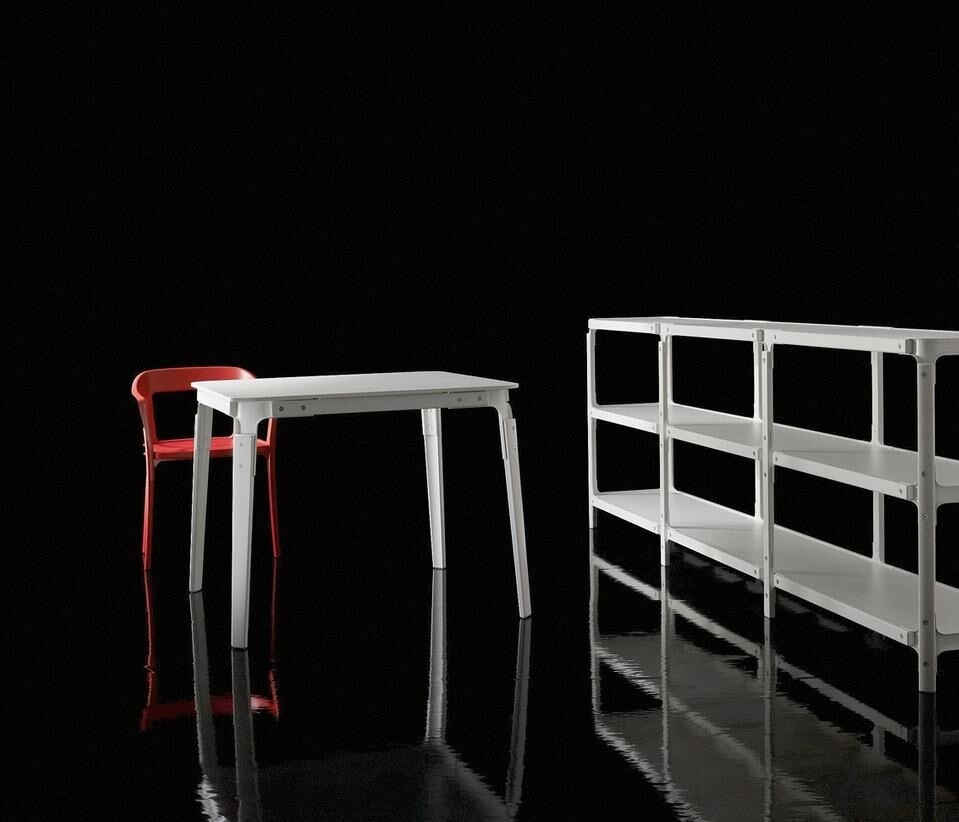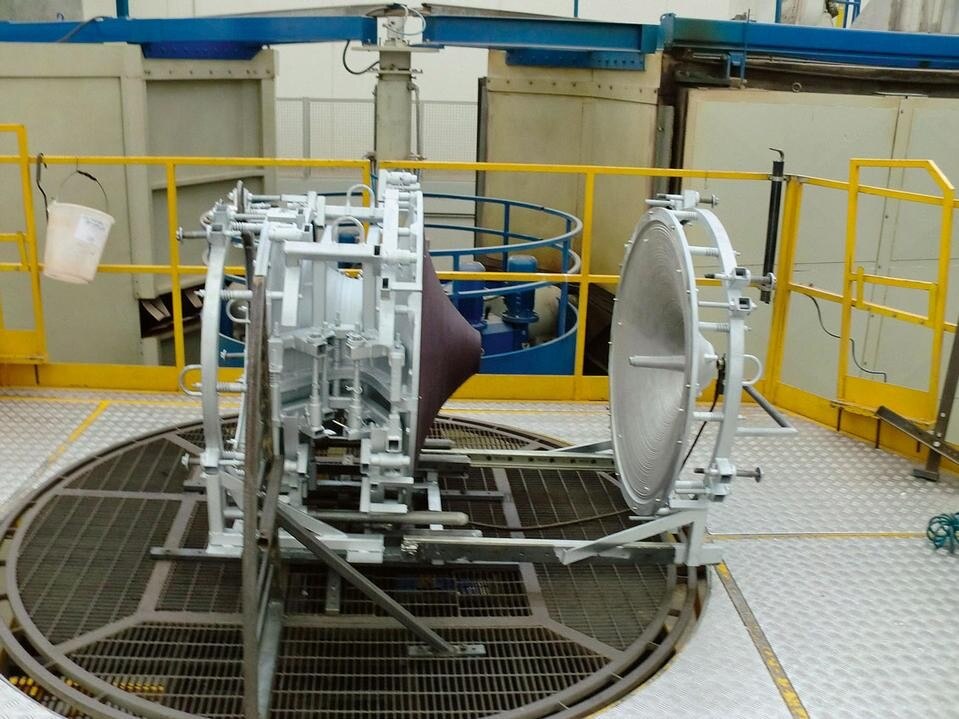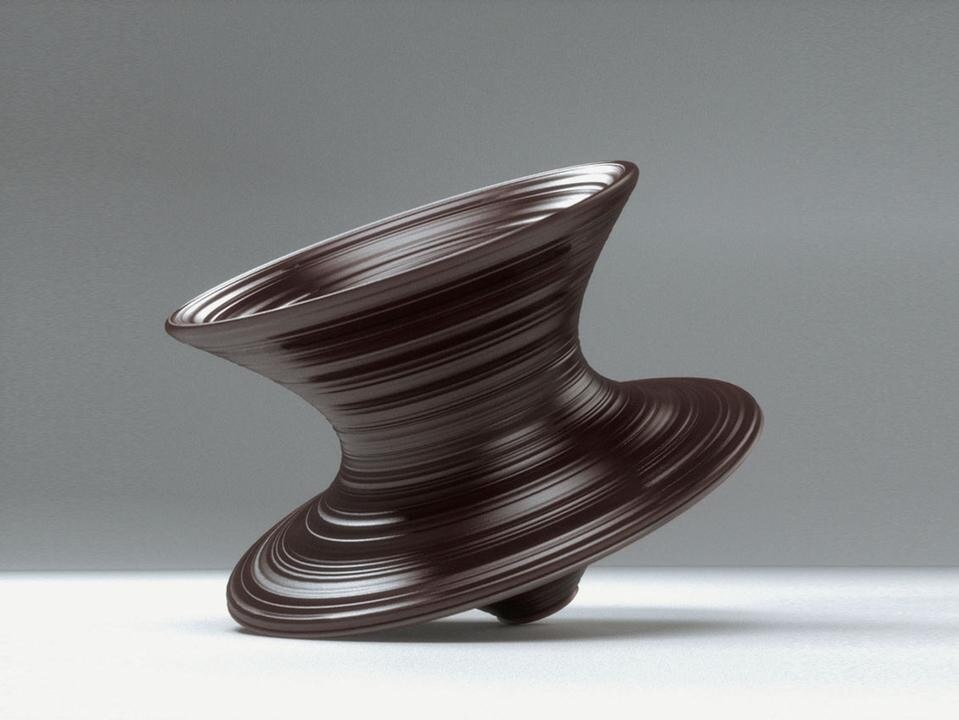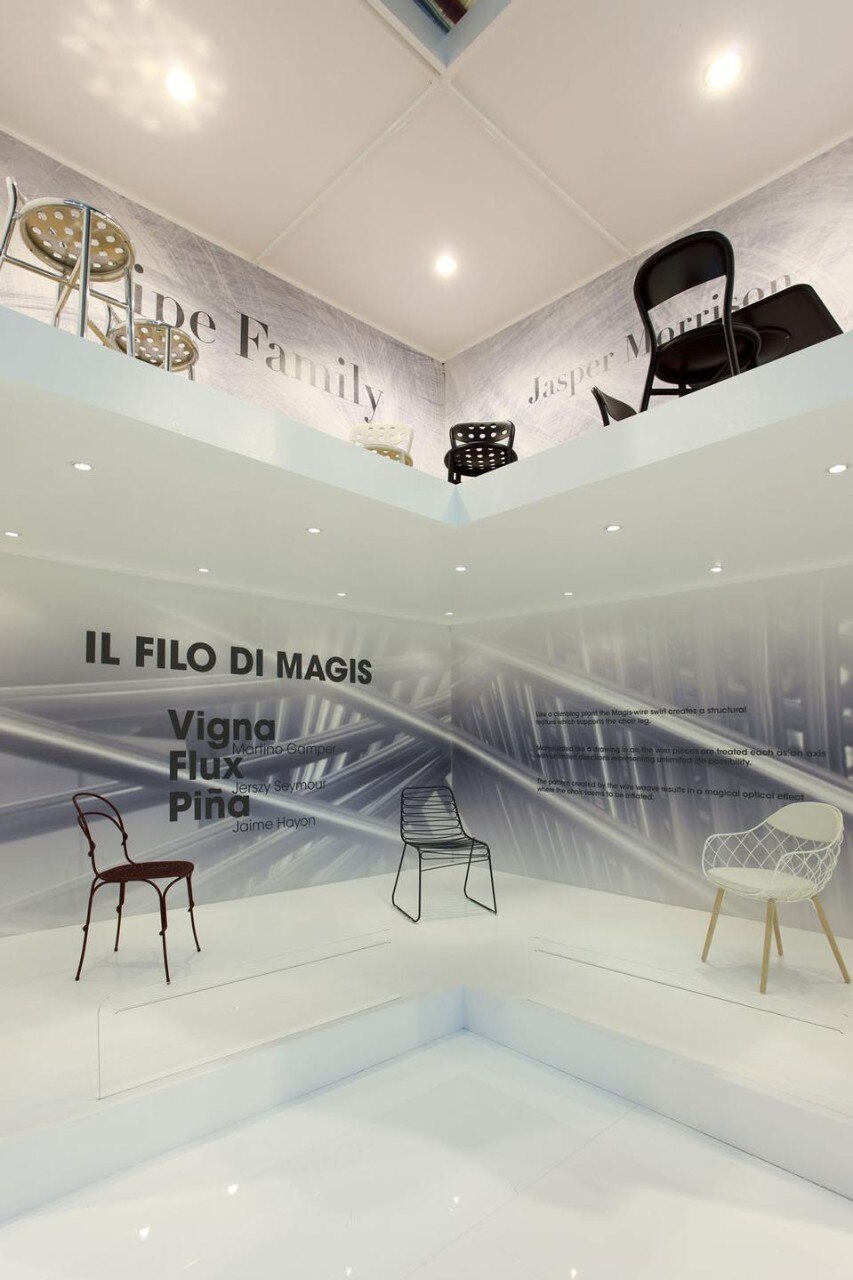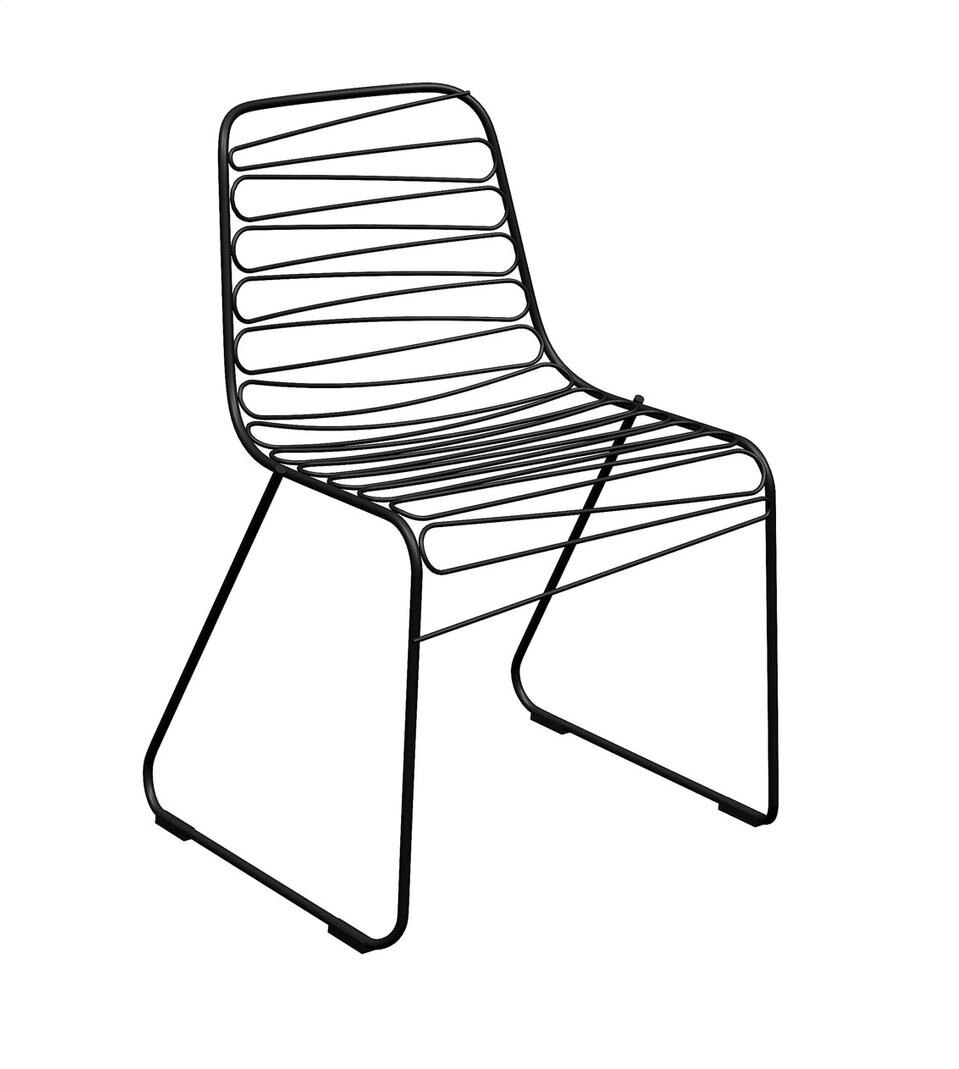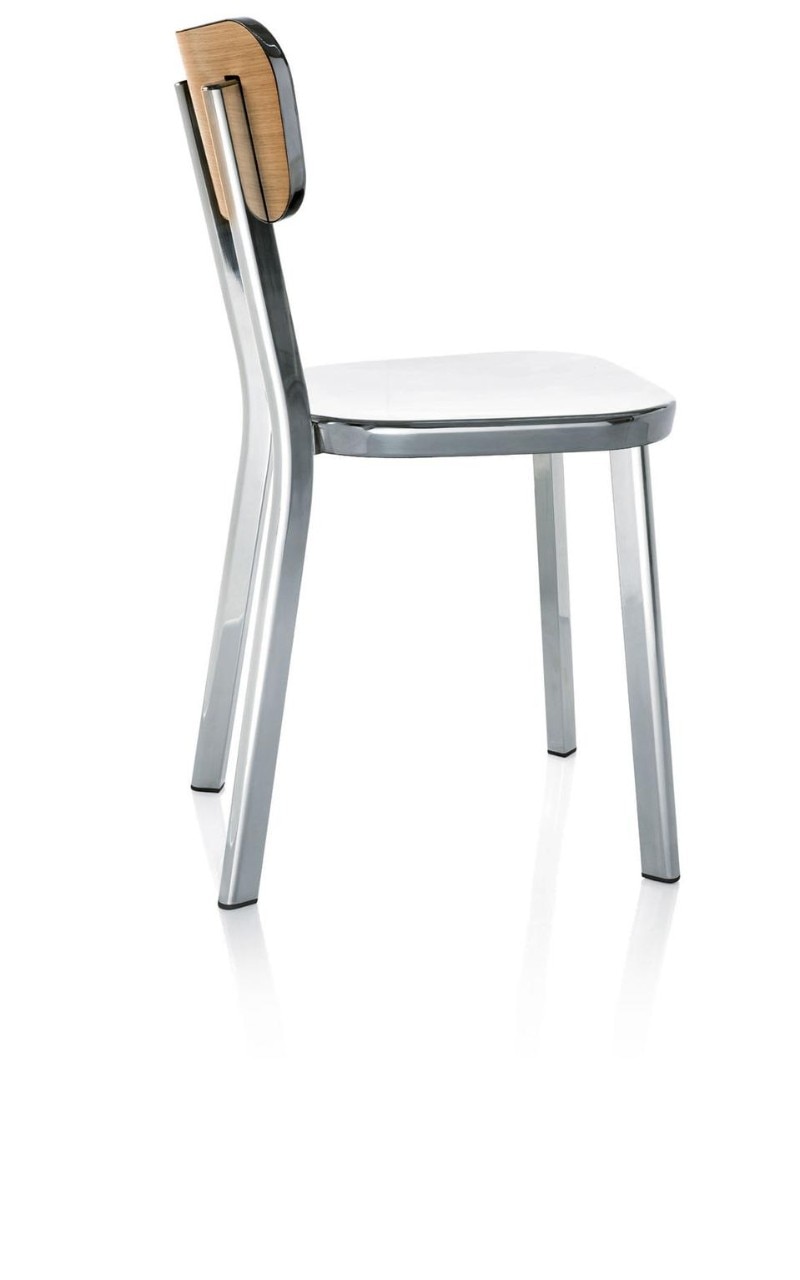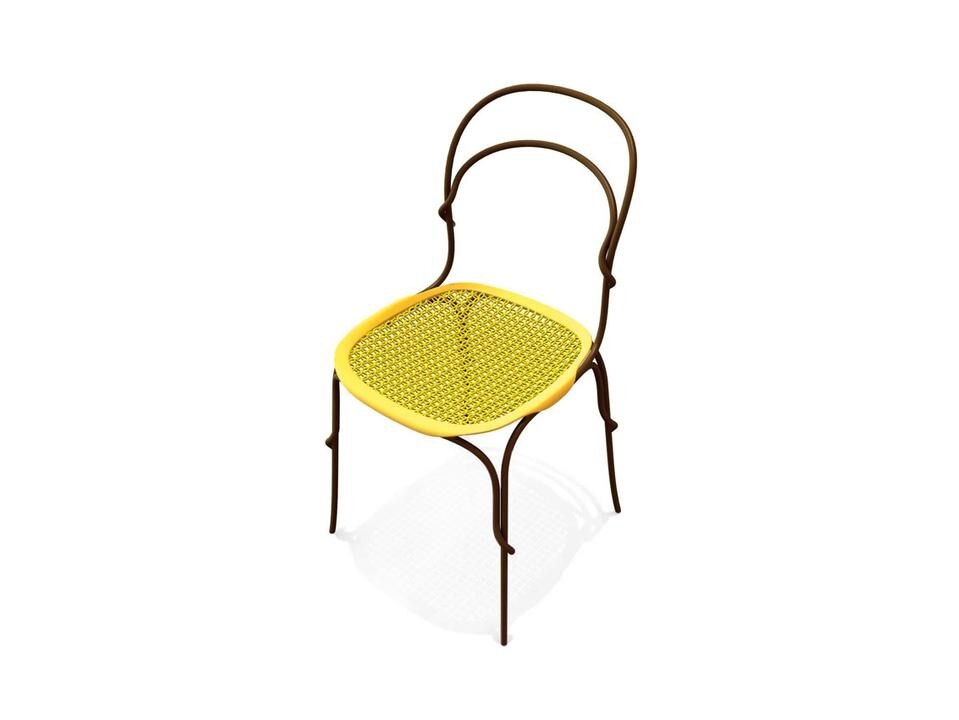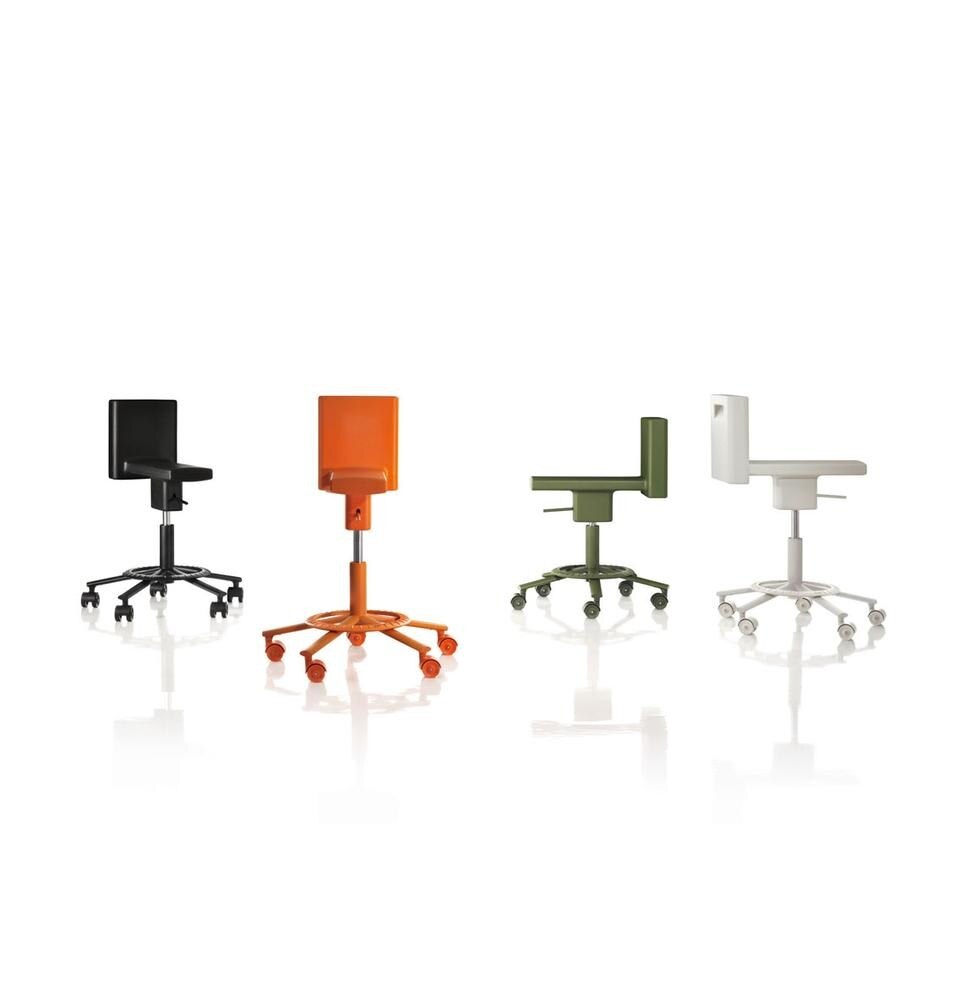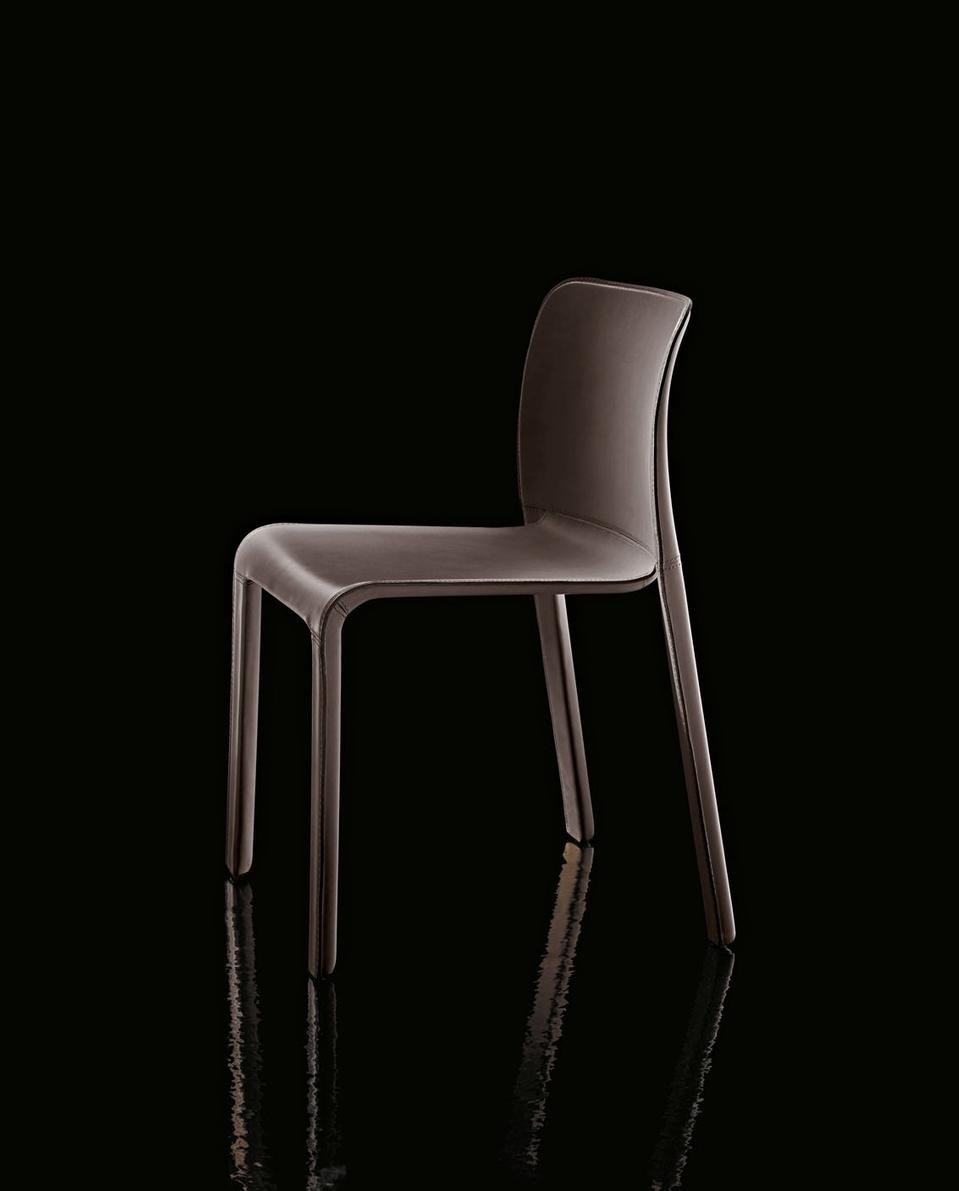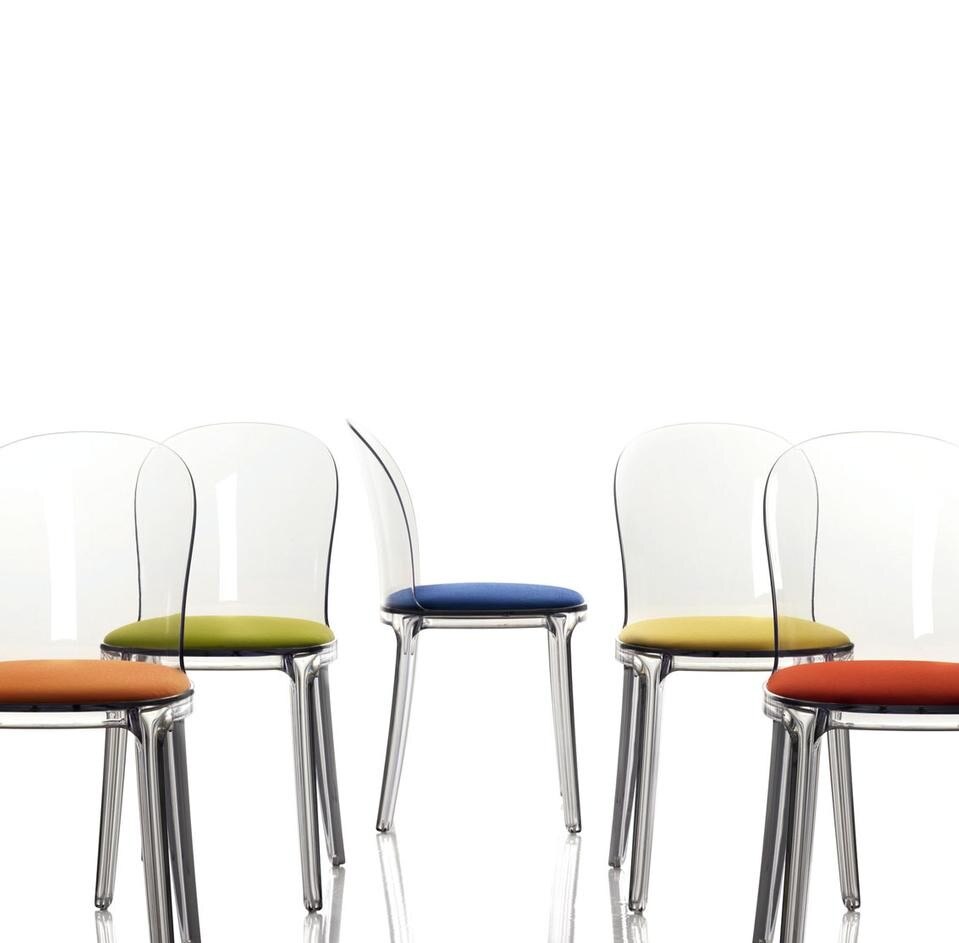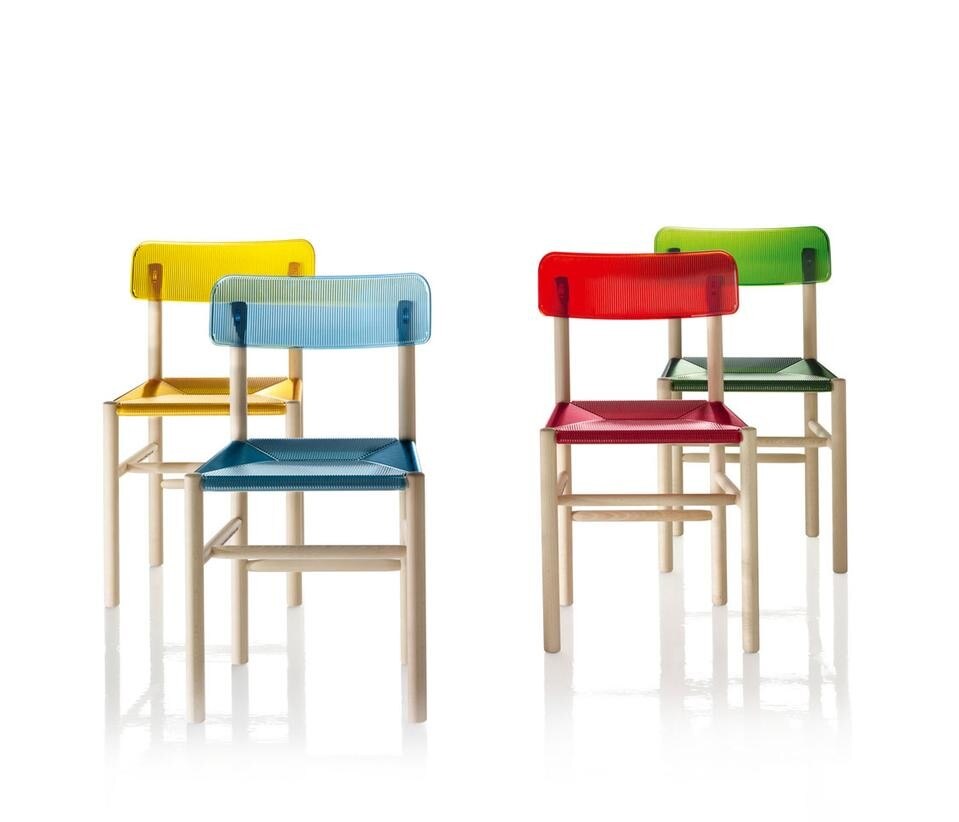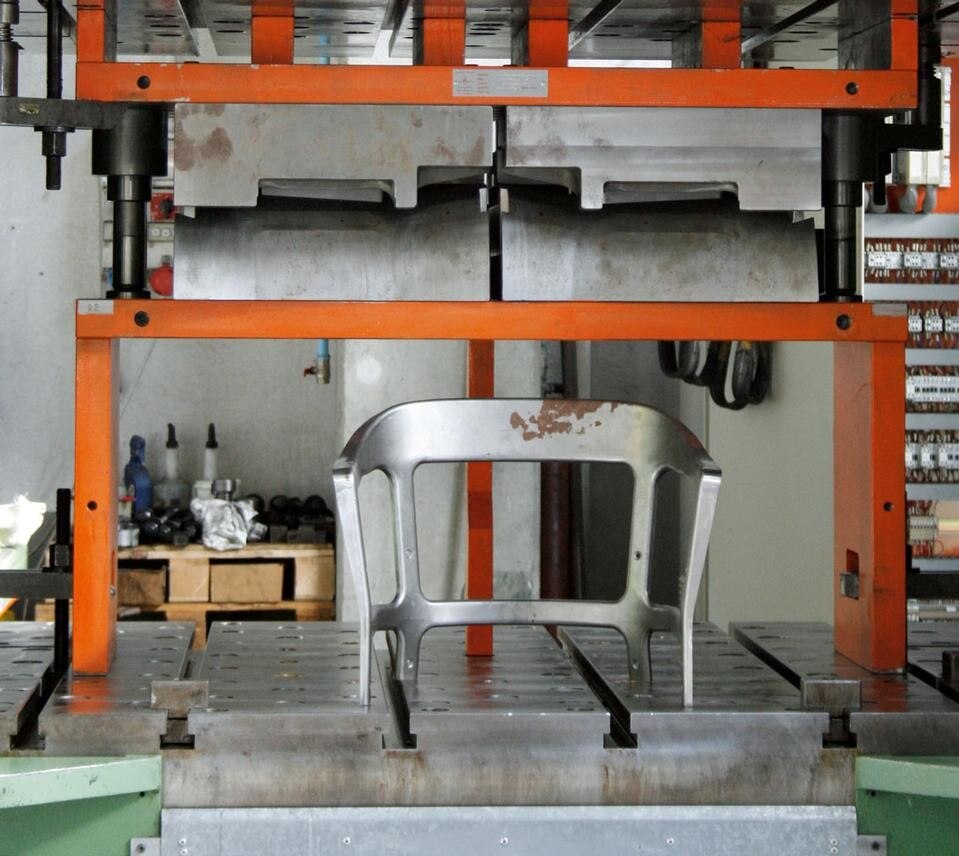Magis is also and particularly embodied in the figure of an all-round entrepreneur, Eugenio Perazza. A self-made man in the best tradition of Italian small and medium industry, he is a born designer in the sense described earlier: an industrialist who poses clear design issues that are in themselves an important part of the answers, especially if thrashed out with talented designers. There is food for thought, however, in the observation that the industrialist in question does not hail from a direct experience of manufacturing (as in the past), but from a commercial background. In this case too, however, Perazza's zeal for the right product and for good design, coupled with the utmost attention to technology, is the perfect springboard for original and innovative action. It is worth remembering, moreover, that Magis is also based in that northeastern corner of Italy which in the 1980s and '90s functioned as one of the motors with the most dynamism in the country's industrial machine. Our appreciation begins with a general review of the company's "editorial" catalogue. First of all we can note that encountering a Magis product is often like reading a clear, straightforward and fluent text. It expresses a precise and meditated reflection, as in a good technical or scientific book (of the popular type from the Anglo-Saxon school). But it can also resemble an exciting and deeply satisfying story, in the best adventure book style of London and Calvino. No room for decorative virtuosities or uninhibited exoticisms. Indeed, designers who are usually of the exotic-decorative ilk (such as Stefano Giovannoni, who on this occasion is elegantly dignified with his Vanity Chair series and the leather version of Chair First; or Marcel Wanders's current output) have, without losing their identity, re-focused on a more measured and incisive essence of their styles. In some cases, we may note a certain, perhaps unconscious tendency to quote the past indirectly. We are reminded of experiments conducted by some of the masters of Italian design, such as Magistretti, Castiglioni and others, particularly in terms of redesign. Provided these points of departure remain within certain limits and are updated or reread with clarity and elegance, the republishing of good texts from a glorious past, thereby also creating good redesign, is perfectly acceptable as part of an articulated and innovative proposal. Such design cues might include the carpenter's trestle rediscovered by Achille Castiglioni with his Leonardo worktable, or Magistretti's stackable tables, mentioned in the 1954 Golden Compass Award, or again, by the same designer, the "trattoria" or popular chair theme, from the Carimate to the Marocca seats.
Looking more closely at individual product-texts from the latest collections (from 2008 to 2010, as with the previous reviews in this feature), it is interesting to highlight certain designs that, in our view, represent a further development of the Perazza- Magis vision. Intriguing, strong and bordering on "adventure" is the Steelwood family of furniture. Here Ronan and Erwan Bouroullec have combined metal shelves with wooden sticks used as connecting cross-pieces and uprights. The hollowed and ribbed iron profiles, in part filled and reinforced by wooden sticks, convey a mood of proto-industrial assemblage. Their apparently simple and "poor" technology is reminiscent of Dickens or Jules Verne. One is immediately reminded of the techniques employed to build the first steamships and their extensive use of iron (as also in Captain Nemo's Nautilus), or of the wood and iron grid structures in the joints of early bi- or tri-planes. Here the mind goes back to names like Farman, Caproni and Blériot, but also to Snoopy's nemesis the Red Baron). The same goes for Jasper Morrison's Trattoria series, where the elementary and timeless theme of "church" or "trattoria" chairs, made with solid, circular- section beech sticks, is resumed as a pure act of redesign. The archetypal form is associated with a pleasantly surprising note of colour and material contrast, by creating the back and seat in translucent polycarbonate. The effect is attractive and perhaps enough in itself. However, this woven-rope-style feature, reproduced in polycarbonate fastened to the beech frame, leaves the impression of a not entirely successful hybridisation. What has always been a type of seating that one would expect to find in rustic Italian settings, and clearly associated with films like Bertolucci's Novecento (English title: 1900) or Olmi's The Tree of Wooden Clogs, is in this case restated as an alienating element like something out of an oneiric and abstract background conceived by Kubrick for 2001: A Space Odyssey. Still on the subject of high-quality sci-fi, one is reminded of the brilliant books by Isaac Asimov on robots, when examining the curious robotic character that inspired Konstantin Grcic's 360° work chair. The effect is not created by the complexity which these seats often possess, where the shell that receives the body is nonetheless very much depicted and exalted. On the contrary, there is no overt complexity here: the peculiarity is instead conveyed by the almost unrecognisable shape of the seat. Its profile, from a single piece of expanded polyurethane, comprises three intersecting sections, of soft beam-axes merged into each other.
The result is an unusual and in some ways autonomous form. Indeed it resembles a freestanding figure, an automaton. One imagines that this particular ergonomic solution for a work seat must have been studied and checked out over a long period. Fascinating as this aspect may be, however, here we are more interested in observing the remarkable attempt to write a new text and idiom, for what is intended to be a different use of furniture in increasingly dynamic and fluid service workspaces. We may mention that Ettore Sottsass in 1972 had already followed this line with his Olivetti Synthesis 45 system. Another certainly captivating object is the Spun Chair by Thomas Heatherwick. His approach is at once simple and complex.
An object whose scale and use are hard to understand is disclosed as a "rotating" chair. Its streaky form suggests on one hand the craft stage of a small ceramic product, and on the other such major artistic exercises as the head of Mussolini, brilliantly interpreted in the futurist style by Bertelli in his Continuous Profile of 1933, or more recently, the fluid sculptures by Tony Cragg or some of the imploded forms by Anish Kapoor. The theme is not exactly new, but the design is sharp and well controlled: an aphorism to be meditated upon. Other aphoristic designs can be found in an area of research close to Perazza's heart. This in fact is where he began his match with design. Wire is the theme, with up-andcoming designers brought in to prove the clarity and sensitivity of their creations, all in an outfit named "Il filo di Magis", or Magis Wire. Jaime Hayon, Jerszy Seymour and Martino Gamper are the first three committed to this exercise. But these trials clearly indicate that a chair can still contain a magic and ancestral essence of man, his needs and utopias. Working within the right limits, the absolute can be reached, to create small pieces of poetry. Our admiration goes in particular to Martino Gamper. These are some of the salient chapters in the Magis story. The Magis collection, including its most recent additions, stretches far and wide, demonstrating the firm's positive and optimistic outlook. Consequently our limited selection here omits other pieces that would certainly deserve critical reflection, which is something we shall always try to offer, both favourable and unfavourable, and with honesty and modesty. Giampiero Bosoni
